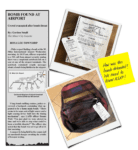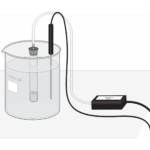Experiments
Here are experiments our science specialists have selected to support this IB* topic.

Color Countdown Timer (Spectrophotometer)
Experiment #7A from Forensic Chemistry Experiments
- Apply scientific principles and evidence to provide an explanation about the effect of blue food dye concentration on the rate of reaction between bleach and food dye.
- Analyze and interpret absorbance spectra to identify the wavelengths of maximum absorbance for blue food dye.
- Use mathematical representations to determine the rate constant for the reaction between blue food dye and bleach and the half-life of the reaction.
- Communicate technical information about the process used to identify the rate of change of blue food dye concentration using absorbance data.
- Write a Case Report to help detectives present the case in court.

The Decomposition of Hydrogen Peroxide
Experiment #12 from Advanced Chemistry with Vernier
In this experiment, you will
- Conduct the catalyzed decomposition of hydrogen peroxide under various conditions.
- Calculate the rate constant for the reaction.
- Determine the rate law expression for the reaction.
- Calculate the activation energy for the reaction.
- Educational Standard
- International Baccalaureate (IB) 2025
- Subject
- Chemistry
- Organizing concepts
- Reactivity 2. How much, how fast and how far?
- Subtopics
- Reactivity 2.2—How fast? The rate of chemical change
- Level
- Standard level and higher level
* The IB Diploma Program is an official program of the International Baccalaureate Organization (IBO) which authorizes schools to offer it. The material available here has been developed independently of the IBO and is not endorsed by it.
